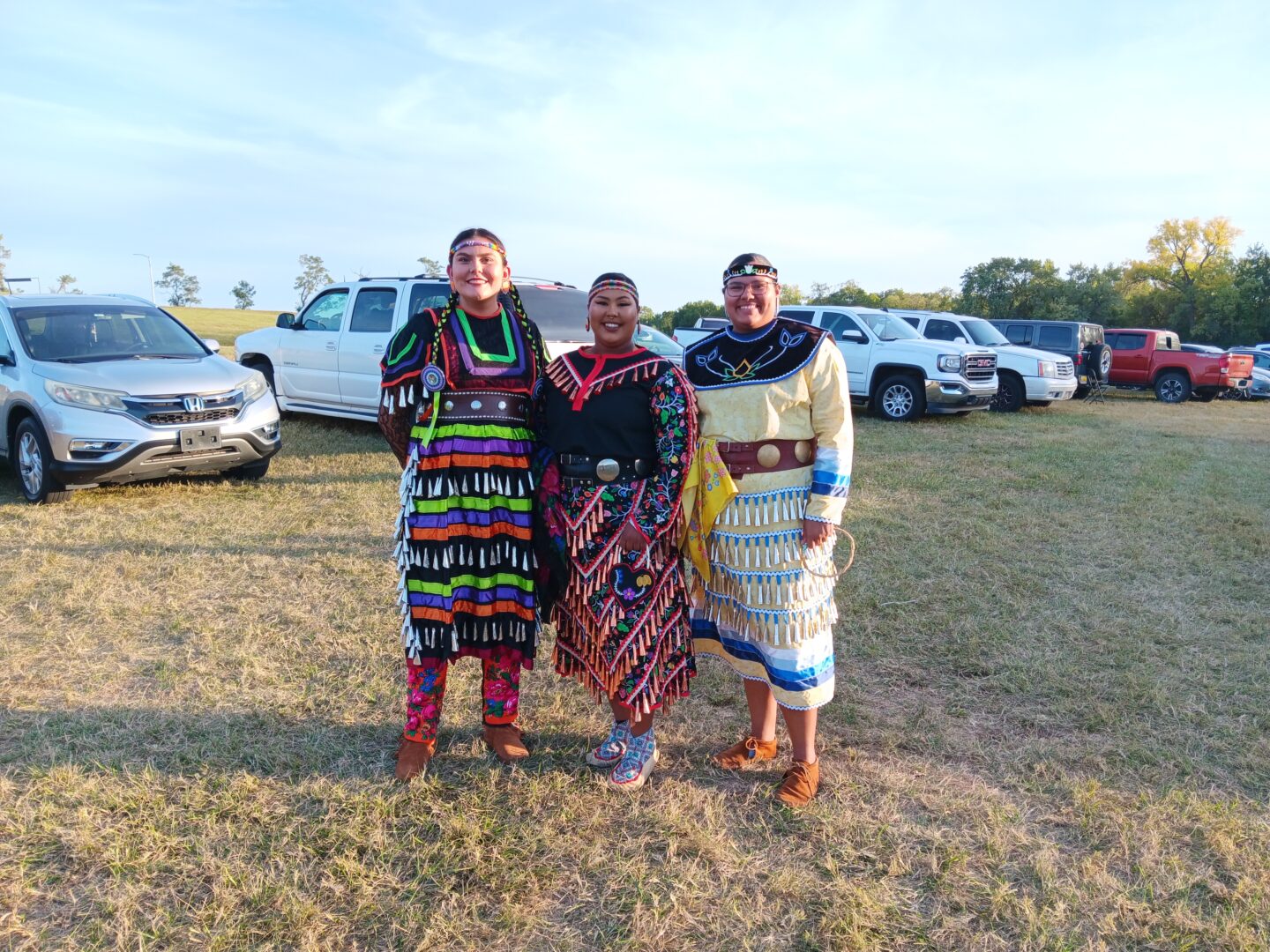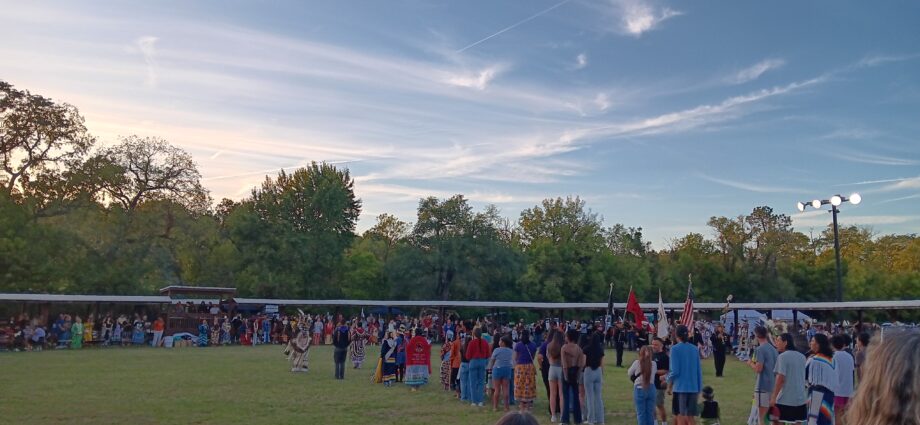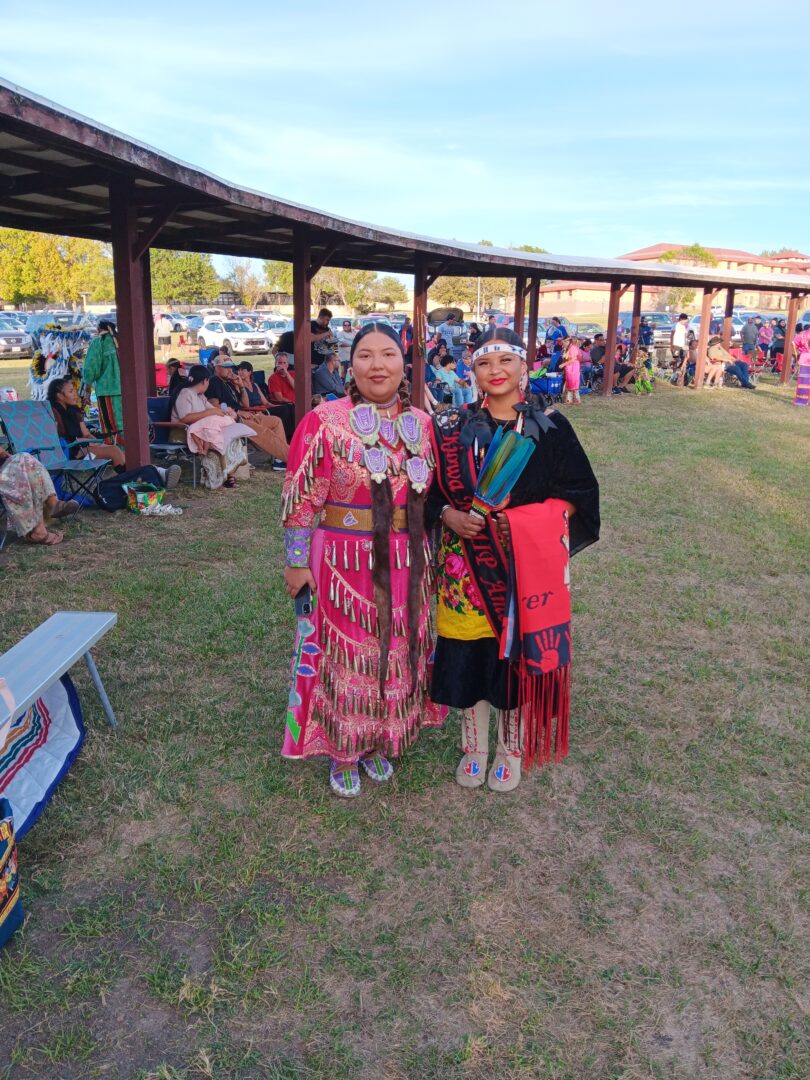
On the chilly evening of September 28th, 2024, on the Haskell Indian Nations University Powwow Grounds, the Haskell Welcome Back Powwow commenced. The event, free and open to the public, began with Grand Entry at 6 pm. From then on it was a rush of colorful regalia and the beautiful, strong echoes of drums. The two groups that handled the beats that night were New Breed out of Winnebago, Nebraska, and Little Soldier from Mayetta, Kansas. With Master of Ceremonies Manny King and Arena Director Steve Byington, the whole night ran smoothly and was a major success. There were dozens of dancers, all regal-looking in their exceptionally fine regalia, ranging in age from tiny tots to elders, to styles such as Northern Traditional, Bird Dance, and Jingle Dress; and they all shared a common love for powwow dancing.
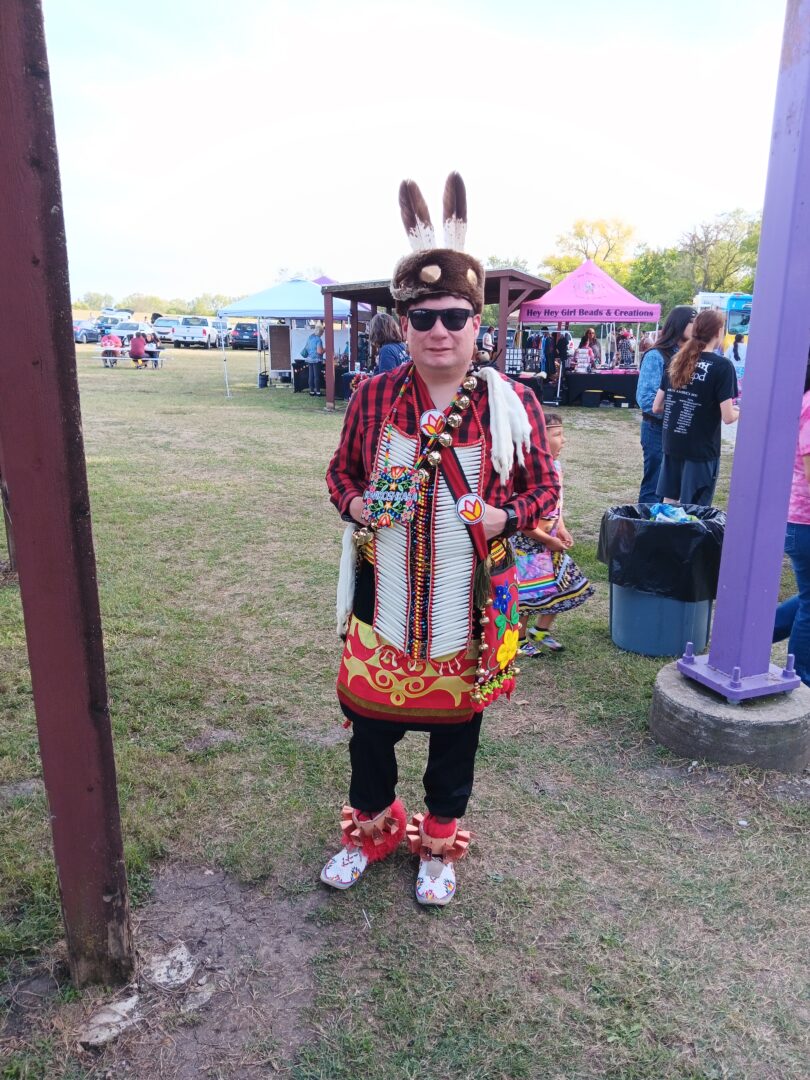
I had the privilege to speak with both the Head Lady and Head Man dancers of the powwow, Allison Levering, Hochunk and Omaha Tribes of Nebraska, and Drake Harlan, Shawnee, Delaware, and Muscogee Creek Nations.
I first met with Harlan, whose style of dance is Men’s Traditional, and has been on the powwow circuit for as long as he can remember. Standing a full foot or two taller than me, he is a larger-than-life character, who was resplendent in his regalia, all beaded and sewn together by his family members and himself. Harlan is extremely passionate about this way of life, and at times he just glided across the arena, especially when it came time to host his Northern Men’s traditional special–he led the way!
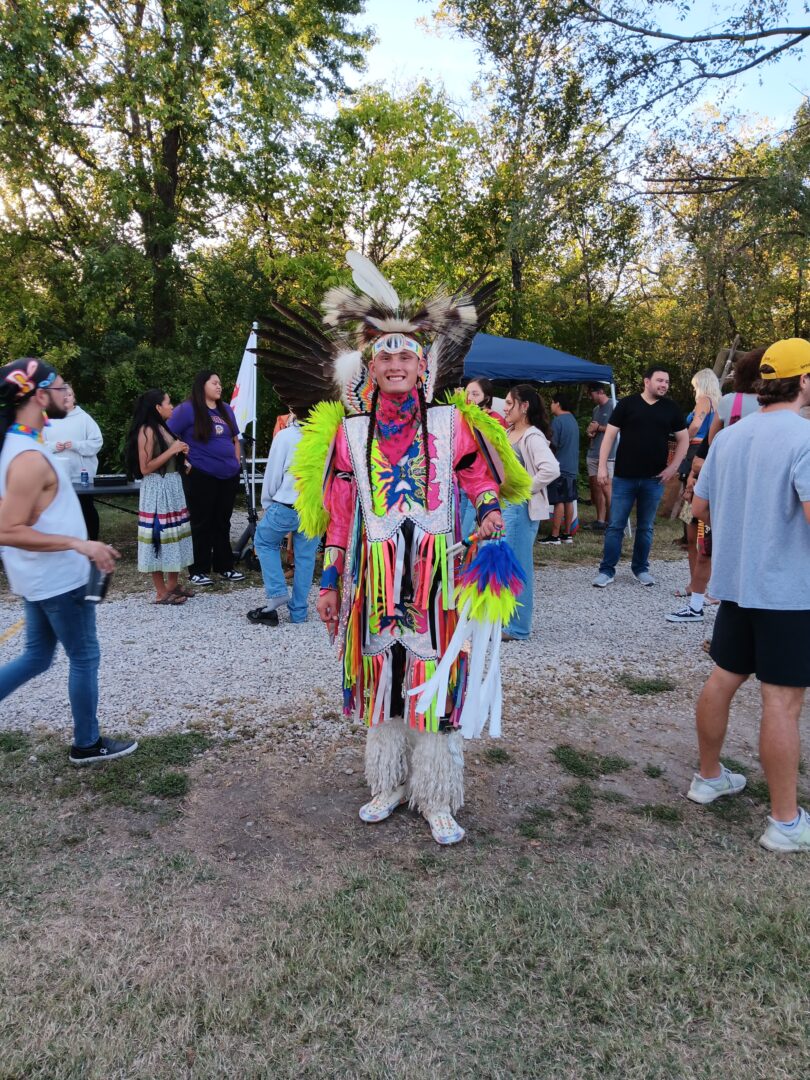
In that special was Bryce Bailey, who I was able to interview as well. Bailey is of the Sac and Fox Nation and Cheyenne Arapaho and has been powwowing since he was two.
“I started out as a fancy dancer, and then I went to men’s traditional, and now I’m doing woodland most of the time,” Bailey said, “What I can say to someone who wants to dance, someone that just started dancing, is just the best you. Be the best you that you can be out there in the arena–because you are going to inspire someone, whether it is someone older or younger. It does not matter how old you are, just be the best you are because someone is watching.”
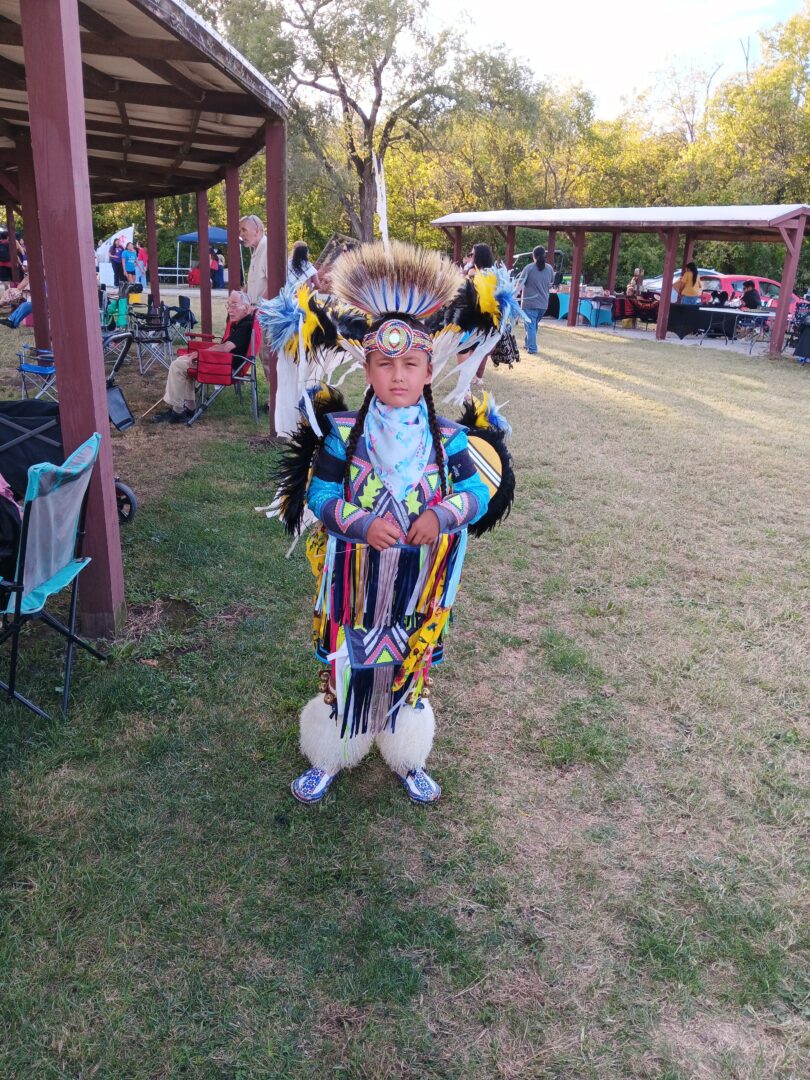
It seemed a common theme among everyone I interacted with that powwowing is just getting out into the arena and going for it.
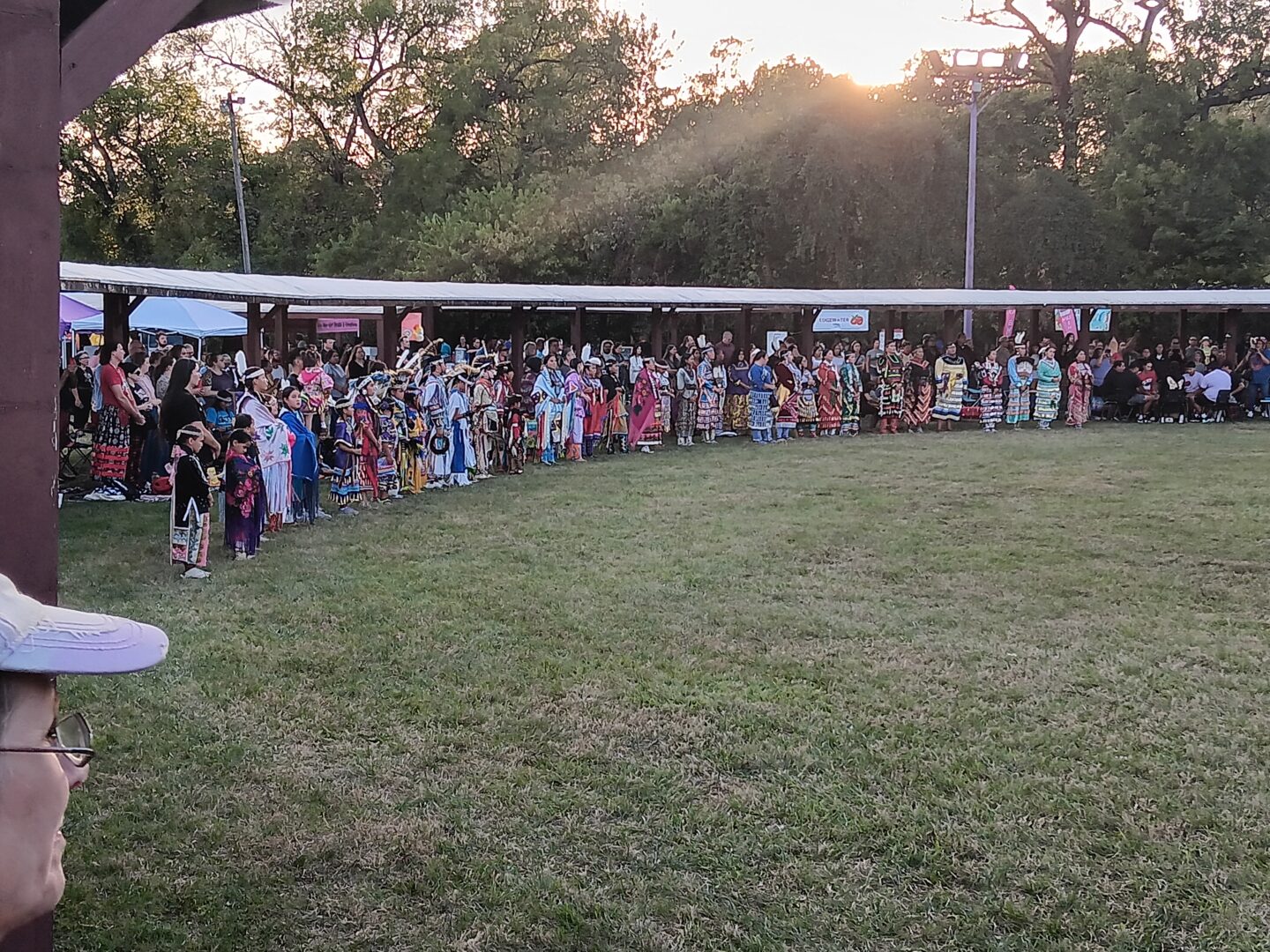
“Do not be afraid to reach out to local artists, do not be afraid to reach out to me. Another thing is to be respectful in the powwow circle, and ask permission when doing anything because this is a very sacred circle for us,” said Levering, “I just encourage everyone who wants to dance to go ahead and do it, there is no wrong or right way to dance, everyone dances their style, whatever category it may be, everyone dances their way and that is your healing, your energy that you are pushing out into the world. And it is always good to share customs and tribal ways, and ask questions, be sure to ask questions.”
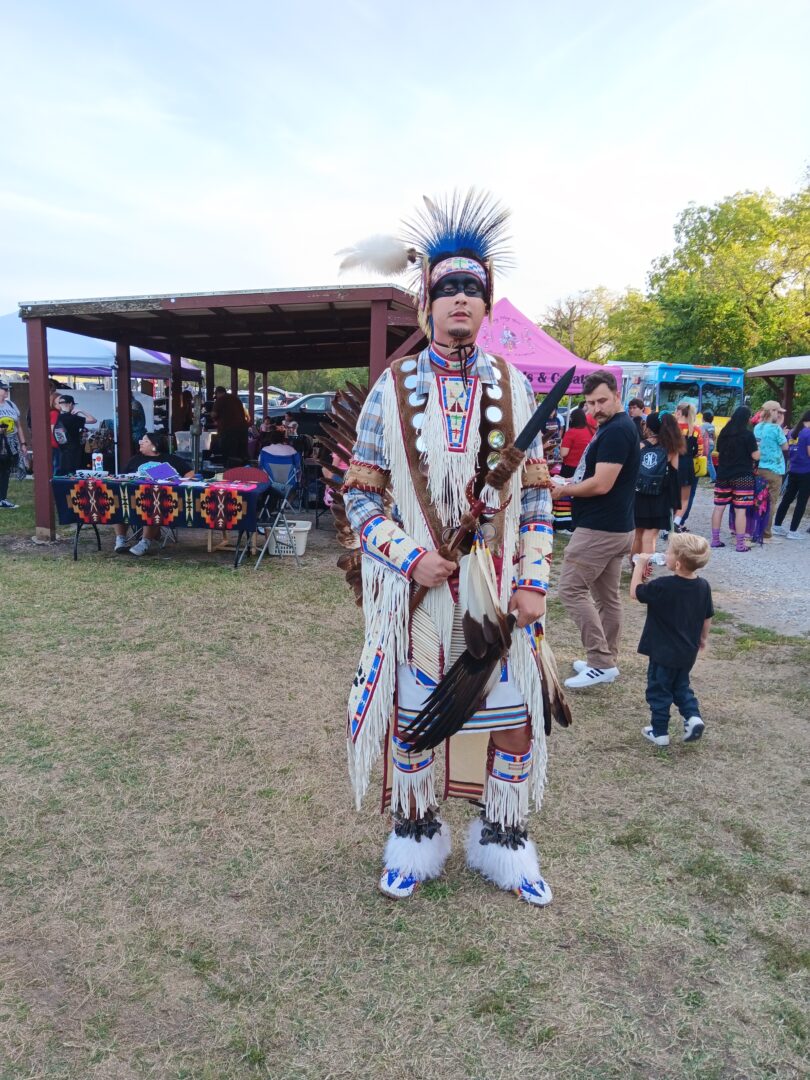
Levering, who dances the Ojibwe Old Style Jingle way, shared with me her meaningful reasons to dance as well: “I choose to dance in honor of my brother Cornell Hamilton Junior, he passed away from suicide about three years ago, and he always told me to keep dancing, do not stop dancing. Because customarily in most tribes, you would stop dancing and cut your hair whenever a close relative dies but my brother was a singer with the White Tail Boys drum group, and he always encouraged me not to cut my hair and to never stop dancing, no matter what.”
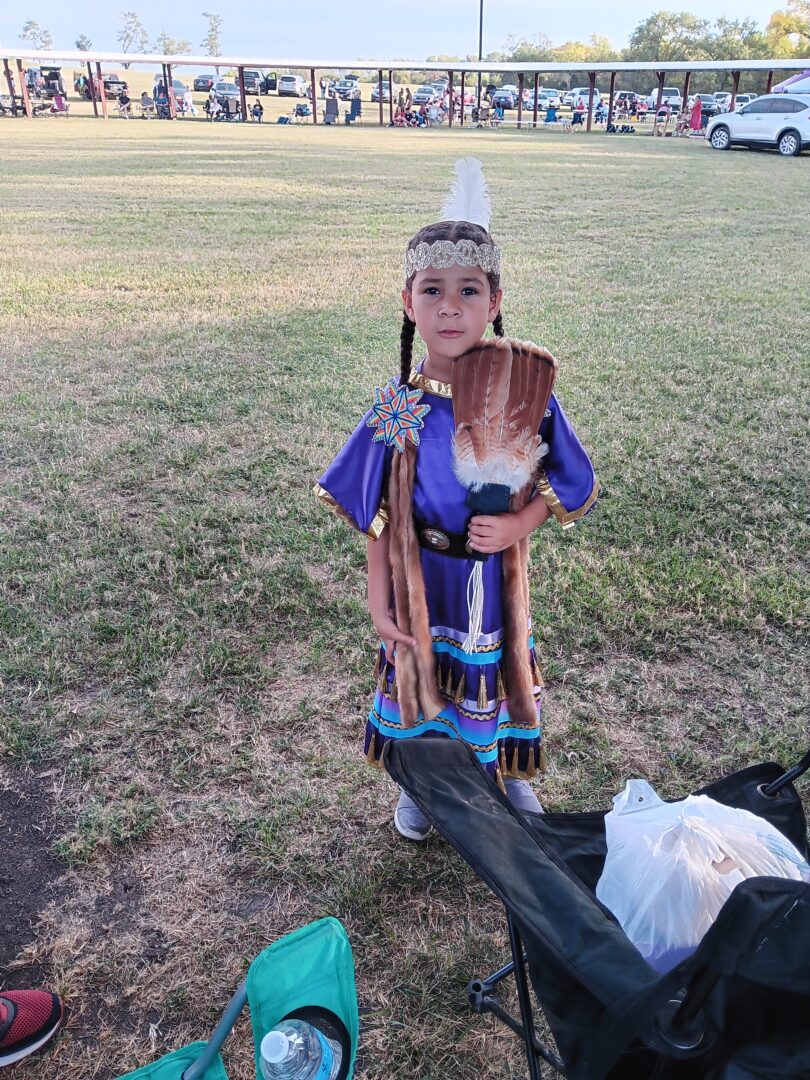
Levering hosted her red dress special that night, to honor her brother, missing and murdered Indigenous people, and her close friend Cole Brings Plenty, who was tragically lost in April 2024. Brings Plenty was posthumously awarded a degree from Haskell, and his presence and influence can still be felt to this day.
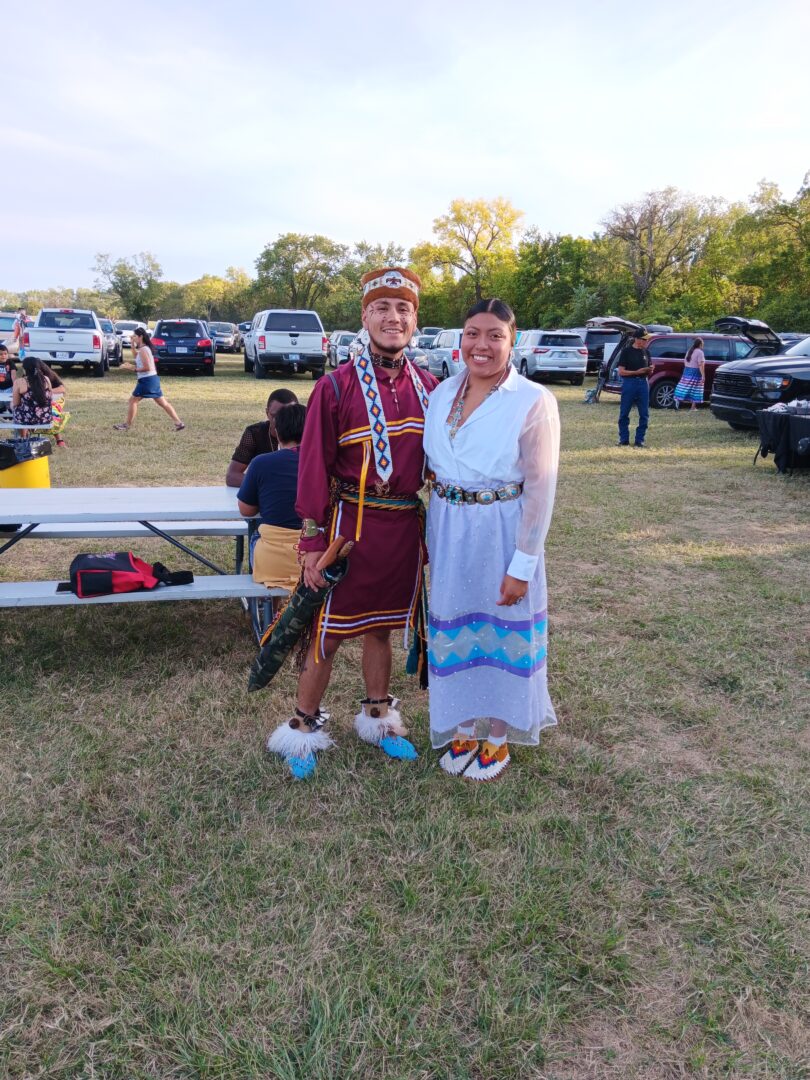
Powwowing is an art form and a way of life in Indian Country, even though it too has seen its share of sorrow in the past. From the late 1800s up until 1978, when the American Indian Religious Freedom Act was passed, this circle of life was banned in the United States and Canada. Events were still held in secret, and for generations, it persevered and held strong. However, as I witnessed that night, many youths there dancing and playing under the bright lights will take up our torches and carry the light forward for our future one day. As the day comes nearer, I can only hope that this community will continue to grow and flourish, like the fast and graceful movements of a Fancy Shawl dancer.
